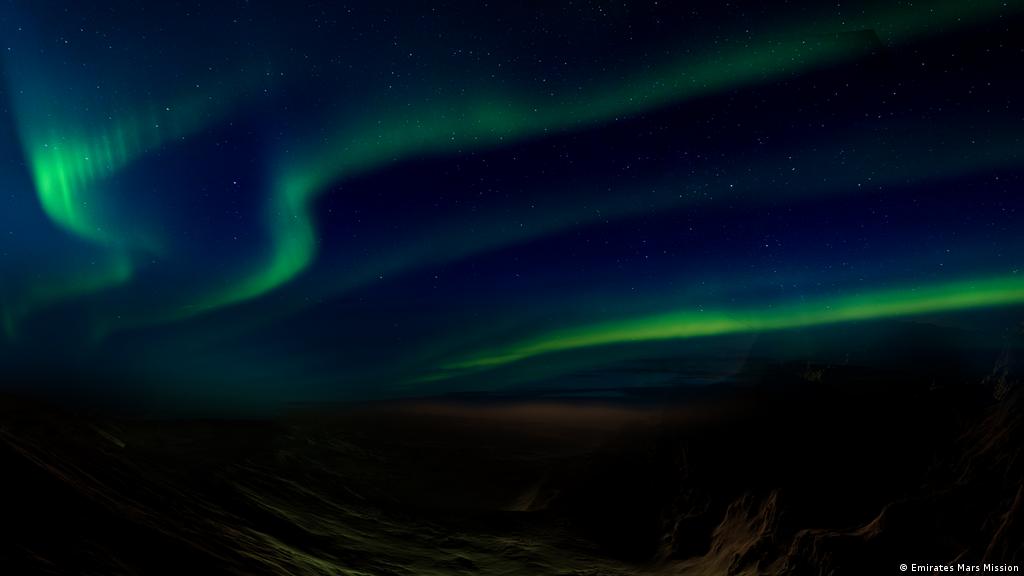A new type of aurora that exists on Mars appears due to the interaction of the solar wind with magnetic fields arising in the crust. The planet does not have a global ionosphere.

Martian Auroras
Physicists from the University of Iowa are interested in the auroras that occur on Mars. The red planet is practically devoid of a magnetic field. Therefore, it was still unclear what the solar wind particles interact with for this or these phenomena could be observed there.
The starting point for the research was data from the Mars Atmosphere and Volatile Evolution (MAVEN) mission, which is managed by NASA. During its work on orbit, this device has recorded at least 200 cases of aurora. In a new study published in the Journal of Geophysical Research: Space Physics, scientists were able to explain how this phenomenon occurs.
According to physicists, this process is quite unique for Mars, although it has a lot in common with terrestrial analogues. The cause of the auroras are local magnetic fields arising in the crust of the planet. Studies show that within such fields, the frequency of occurrence of these phenomena is determined by the orientation of the magnetic field relative to the solar wind. At the same time, beyond their limits, the glow of gases correlates with the pressure of light.
Ionosphere and geological structure of Mars
The mystery of the Martian auroras is part of a much larger secret linking together the internal structure and magnetic field of the red planet. Until now, the prevailing opinion was that Mars was mostly dead. There is no movement of molten matter inside, so earthquakes are all in the past.
And if there is no internal dynamo, then there is no magnetic field, as well as the ionosphere. But the research of the last decade shows that geological events know nothing about our confidence that they do not exist. And there are Martian auroras, although not as global as on Earth.
Now scientists more or less agree that in fact some geological processes are taking place under the crust of Mars or directly in it. And the question of how global they really are is very important for the future colonization of the planet. After all, if the depths of our neighbor are not completely dead, then they can be activated and better protect future cities from cosmic radiation.
According to phys.org
Follow us on Twitter to get the most interesting space news in time
https://twitter.com/ust_magazine
